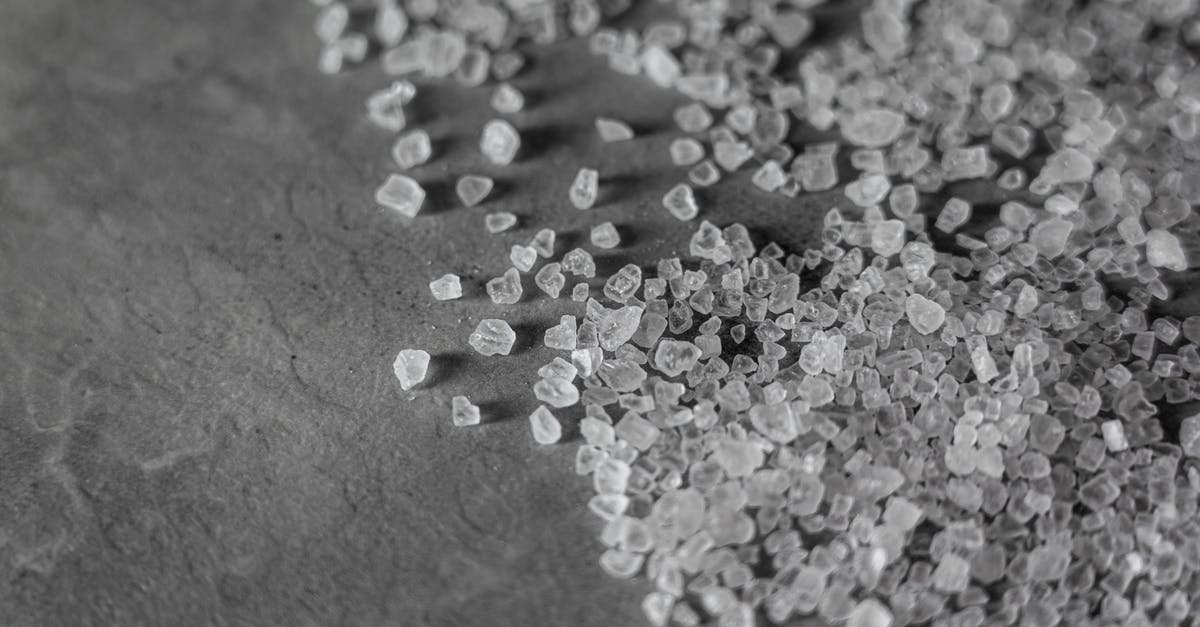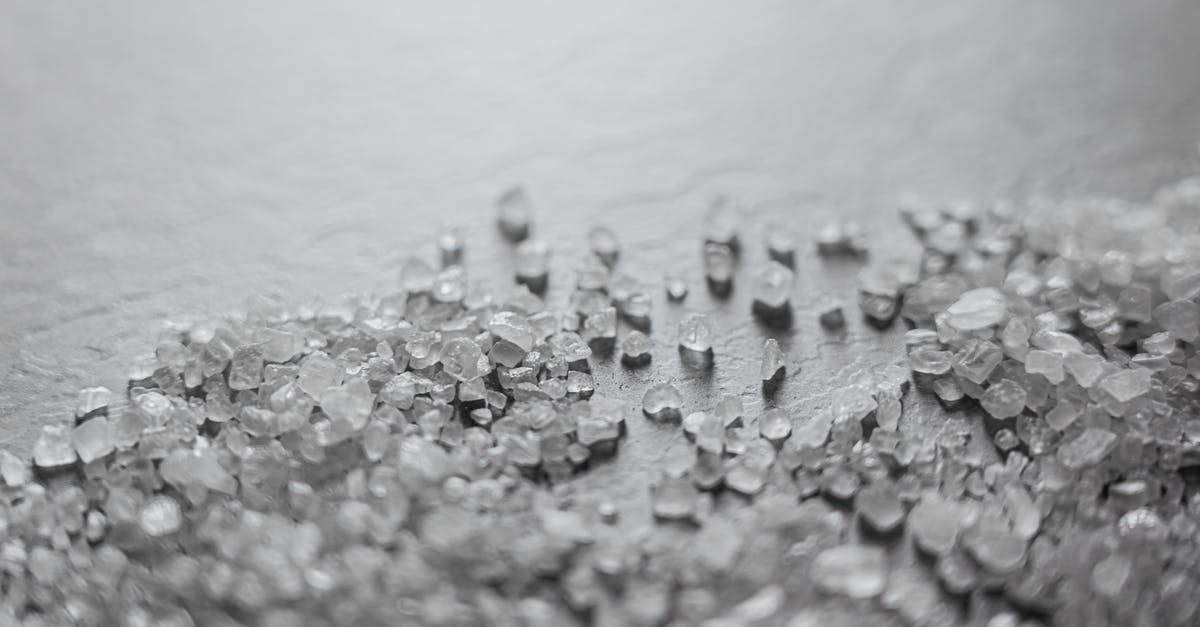How/when is salt added to commercial salted butter?

This is surprisingly hard to find with Google. The Wikipedia article does say:
Either granular salt or a strong brine are added to salted butter during processing.
but there's no citation provided, and no further details.
So: are both granular salt and brine actually sometimes used? At what stage in processing is each added? And if it's not obvious from that much information, how does the granular salt end up evenly dispersed, with no noticeable grains?
Best Answer
The full quoted information below provides much more detail. The simple answer:
Depending on the method of production used, either salt (presumably dairy salt) or a salt slurry is added to the butter at the point in the process when the butter and buttermilk have been separated, before the final working stage, which also helps distributes the salt.
From How Products Are Made:
Butter Manufacture Preparation
1 For many years the major creameries for butter manufacturing were located in the states of the Eastern seaboard, but the flourishing of a more industrialized agriculture in the Midwest led to the predominance of butter-making facilities there. The modern butter-making process begins when fresh cow's milk from dairy farms is brought into the facility. The product is inspected, classified into different groups according to its adjudged quality, and then filtered to remove impurities. Then the milk is separated by means of centrifugal force. It is pumped into a large, cylindrical, vertical rotator device. When turned on, this rotator spins the liquid until the cream rises to the top. The cream is then fed into large stainless steel vats and heated to 180°F (82°C) for about 30 minutes in the pasteurization process to remove any lingering bacteria. The pasteurized cream is then left to cool.
Churning
2 The cream is placed in a large, mechanical churn usually made of aluminum. Some of these industrial-sized churns can make 1,500-5,000 pounds (681-2270 kg) of butter at a time. When the churn is activated, it tumbles the cream, much like the motion of a clothes dryer, while a worker watches the process through a small glass window on the churn. After about 45 minutes, small granules of butter begin to form, and the butter and buttermilk are separated. Salt is added, and the mixture is churned further. When this process is completed, a stainless steel mobile device sometimes called a "boat" is placed adjacent to the opening of the mechanical churn. The door of the churn is opened, and the butter begins to spill out into the boat; activating the churn removes the rest. It is then wrapped into 64-pound (29 kg) cartons and sent to the distributor. There, the butter is repackaged for consumer and food-service industry use.
(Emphasis mine.)
There's also a good article (with a chart) on WebExhibits.
Also, from the University of Guelph.
Salt is used to improve the flavour and the shelf-life, as it acts as a preservative. If the butter is to be salted, salt (1-3%) is spread over its surface, in the case of batch production. In the continuous buttermaker, a salt slurry is added to the butter. The salt is all dissolved in the aqueous phase, so the effective salt concentration is approximately 10% in the water.
After salting, the butter must be worked vigorously to ensure even distribution of the salt. The working of the butter also influences the characteristics by which the product is judged - aroma, taste, keeping quality, appearance and colour. Working is required to obtain a homogenous blend of butter granules, water and salt. During working, fat moves from globular to free fat. Water droplets decrease in size during working and should not be visible in properly worked butter. Overworked butter will be too brittle or greasy depending on whether the fat is hard or soft. Some water may be added to standardize the moisture content. Precise control of composition is essential for maximum yield.
(Again, emphasis mine.)
Pictures about "How/when is salt added to commercial salted butter?"



Quick Answer about "How/when is salt added to commercial salted butter?"
The simple answer: Depending on the method of production used, either salt (presumably dairy salt) or a salt slurry is added to the butter at the point in the process when the butter and buttermilk have been separated, before the final working stage, which also helps distributes the salt.Why is salt added to commercial butter?
The salt performs two main functions: enhances the taste and prolongs the preservation of the product by inhibiting the growth of microorganisms. The packaging used for butter further protects it against light, oxidization, odour absorption, evaporation and discolouration.Is salt added to salted butter?
The addition of salt in the butter-making process turns unsalted butter into salted. In addition to taste, salt also acts as a preservative to prolong the shelf life of the butter \u2014 salted butter is good up to five months when refrigerated, while unsalted butter is good up to three months.How salt is in salted butter?
The amount of salt in salted butter varies from brand to brand\u2014it can range from 1.25 percent to 1.75 percent of the total weight, making it impossible to offer conversion amounts that will work with all brands. Also, salted butter almost always contains more water than unsalted butter.How do you add salt to butter?
Substituting Unsalted Butter for SaltedHow Much Salt Is In Salted Butter?
Sources: Stack Exchange - This article follows the attribution requirements of Stack Exchange and is licensed under CC BY-SA 3.0.
Images: Gonzalo Guzman, Castorly Stock, Castorly Stock, Castorly Stock
